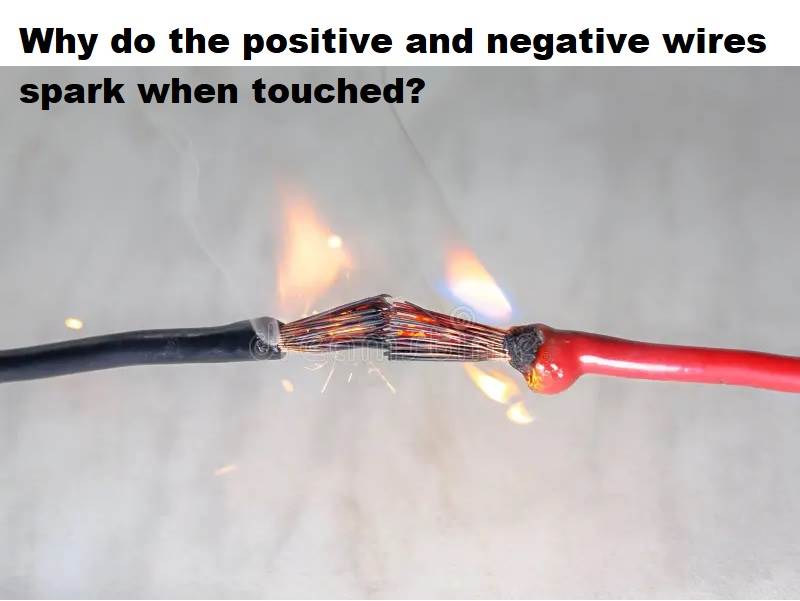Answer:
The sparking that occurs when positive and negative wires are touched is primarily due to the flow of electrical current between them. When the two wires come into contact, electrons move from the negatively charged wire to the positively charged wire, creating a spark in the process.

Reasoning:
- Electron Transfer: Electrons naturally move from areas of higher concentration (negative wire) to lower concentration (positive wire) when the two are connected.
- Potential Difference: The spark is a result of the potential difference between the positive and negative charges in the wires.
- Resistance: The resistance in the wires causes heat, leading to ionization of the surrounding air and the creation of a visible spark.
- Conductivity: The spark is more pronounced in conductive materials due to their ability to facilitate the flow of electrons.
- Voltage: Higher voltages increase the likelihood of sparking as the force pushing electrons is stronger.
- Short Circuit: Sparks may occur during a short circuit, where the current bypasses the intended path and takes a shortcut between positive and negative terminals.
- Material Properties: The material of the wires and their coating can influence the intensity and appearance of sparks.
- Faulty Connections: Loose or damaged connections can contribute to sparking due to increased resistance and heat generation.
- Frequency of Contact: Frequent contact between the wires may lead to continuous sparking, especially if conditions favor it.
- Safety Hazards: Sparks when touching wires can pose safety risks, emphasizing the importance of proper handling and insulation.
FAQs
Q: Why do positive and negative wires spark when touched?
A: Electrons move from the negative to the positive wire, creating a spark due to potential difference and resistance.
Q: Does wire thickness affect sparking?
A: Thicker wires generally have lower resistance, reducing the likelihood of sparking.
Q: Can sparking be prevented?
A: Proper insulation, secure connections, and adherence to safety practices can minimize sparking.
Q: What role does voltage play in sparking?
A: Higher voltage increases the force pushing electrons, intensifying the likelihood of sparking.
Q: Is sparking always a sign of a problem?
A: While normal sparking can occur, excessive or continuous sparking may indicate issues such as short circuits.
Q: Are all materials prone to sparking?
A: Conductive materials are more likely to spark due to their ability to facilitate electron flow.
Q: Can sparking cause damage to electronic devices?
A: Yes, excessive sparking can lead to heat buildup and damage components.
Q: Why do sparks sometimes look different?
A: Material composition and environmental factors can influence the appearance of sparks.
Q: How can one safely handle wires to avoid sparking?
A: Ensure proper insulation, avoid damaged wires, and follow safety guidelines.
Q: Is sparking more common with AC or DC?
A: Sparks can occur with both AC and DC, but factors like frequency and voltage may influence their frequency.
 Electrical Engineering World
Electrical Engineering World